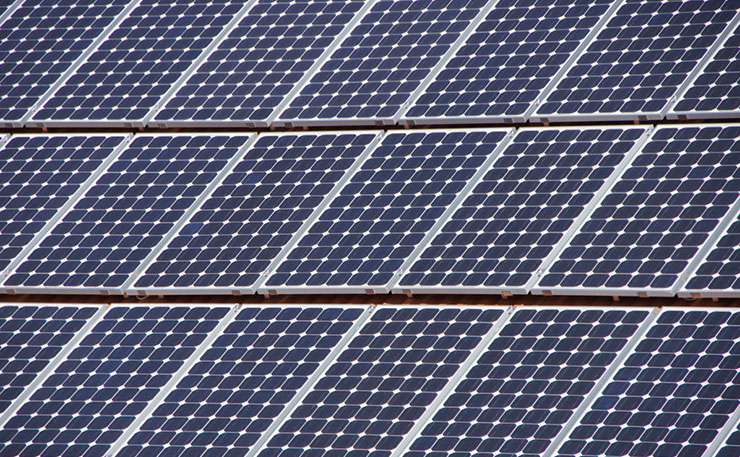The Finkel Report is not only too accommodating of the Coalition’s coal fetish, as Ben Eltham points out. It’s also too conservative from an engineering perspective because it’s constructed around a 1960s model of electricity supply, writes Ian McAuley.
The Finkel Report “is more about politics than science”, to quote Ben Eltham in his analysis this week for New Matilda. It’s given far more weight to appeasing the coal industry’s supporters in the Coalition than to addressing the problem of climate change.
Quite apart from this bias, it echoes the way we saw power systems 50 years ago, when governments and businesses believed that electricity had to be provided with plenty of redundant capacity. An analogy is the way we look on water supply: we would always want to ensure we had reservoirs with more than enough capacity to serve our immediate needs.
It’s an approach focussing on the supply side, while assuming that demand is something that just has to be accepted. In such a model, electricity systems are designed to cope with peak demands, even if that results in great deal of redundant (and therefore expensive) capacity for most of the time.
Hence the report’s emphasis on “dispatchable capacity”. Solar and wind systems are okay, but only so long as they have their own storage systems such as batteries and pumped hydro, to allow them to cope with sudden changes in demand. Also they must be able to emulate the “physical inertia” of big gas and coal-fired power stations, which have heaps of capacity in their generators’ spinning rotors (think of the benefit to a cyclist who has plenty of speed when approaching a hill).
It’s all about supply, using a traditional concept of only a weak interaction between suppliers and users.
Disappointingly, Finkel’s report has little to say on how demand can be better shaped to take advantage of renewable technologies, and it is dismissive of the possibility of distributed storage as a way of providing a buffer between electricity suppliers and users. It gives nodding recognition to demand issues in a chapter titled “rewarding consumers”, but that chapter’s emphasis is on improving consumer information.
Undoubtedly consumers do need more information about electricity – it’s revealing that while almost everyone knows the price of a litre of gasoline and the fuel performance of their car, few know how much they pay for a kWh of electricity and the electricity use of their various appliances.
Electricity retailers have done everything they can to confuse consumers, and the only information most people get about appliance efficiency is a patronising and unquantified “energy star rating”.

There is far more that can be done on the consumer side to make sure we take full advantage of renewable power. As an example, imagine loading your clothes into the washing machine in the early morning, and the machine responding with a display telling you it will default to a delayed start later in the day, when there is an abundance of low-cost solar power, unless you choose an immediate start which will cost you a premium. The same design principle can apply to dishwashers and clothes dryers, both heavy users of electricity.
Similarly, at times of heavy demand (in Australia’s case hot summer afternoons), power can be subject to what I call “gentle rationing”. Rather than cutting off whole suburbs, the power supplied to specific appliances can be trimmed.
Your refrigerator’s compressor may be turned off for five minutes, while it displays a warning sign that you should consider waiting before you open it (you probably won’t be home anyway), or your air conditioner’s thermostat may be turned up from 22 to 24 degrees for half an hour, and you won’t notice it.
To extend the cyclist’s analogy, it’s like having a track with well-graded hills, saving a lot of energy and the risk of running out of puff in the steepest parts.
These are not pie-in-the sky ideas. They are simple applications of what is known as “the internet of things”, using existing low-cost technologies, on connections that demand little bandwidth. They can be rolled out as we replace our appliances.
In fact there is nothing novel about delayed supply of electricity. For decades many Australian houses have had separately-wired and separately-metered hot water heaters, which switch on in the middle of the night (typically between 10 pm and 5 am), to take advantage of spinning capacity in the power system. Many households who don’t have solar hot water still have these arrangements, and the industry is still psychologically locked into the model of big fossil-fuel powered power stations running through the night.
It’s an absurd arrangement – in terms of the potential to exploit solar capacity the timing is 12 hours out. Those who hold to conspiracy theories may believe it’s specifically designed to support the coal industry with its interest in continuous spinning capacity (indeed, a conspiracy theorist may believe that the whole National Electricity Market was designed to support the coal industry).

A simpler explanation is the laziness and indifference of the electricity “retailers” – financial and marketing commission agents who do nothing useful for consumers while absorbing a quarter of their electricity bill.
Of course there is a limit to technologies that shape demand to renewable supply. When a high pressure weather system settles over south-east Australia, there isn’t much wind and in the evenings solar is of no use. If we are to rely on renewables we need storage. Pumped hydro and solar thermal systems serve that purpose and because of falling prices, lithium ion batteries are coming to play an increasing role.
At first sight, therefore, the report’s recommendation that renewable supplies should have their own storage makes sense, but it overlooks the possibility that battery systems can operate as intermediaries between suppliers and users, without being attached to particular supply sources.
The obvious candidate is the electric car. We tend to think of it as a car with a battery, but it’s more realistic to think of it as a battery on wheels which, apart from taxis and some other commercial wheels, is stationary for 97 per cent of the time. And that’s a big battery, upwards from 20 kWh, broadly in line with daily household electricity use (about 15 kWh).
Yet the Finkel Report is dismissive of this possibility. To quote (P 195):
It is possible, in principle, for electric vehicles to be used as distributed energy storage facilities, releasing energy back to the grid at peak times, and also helping in addressing the management of frequency, reactive power and voltage to improve grid security and reliability. However, the Panel is not aware of any cases where the use of electric vehicles in this way has commenced commercially.
Technologies to address concerns about frequency, power factors and voltage in batteries and renewable sources are well past the drawing board and proof-of-concept stage, but they take time to be taken up widely, and it takes time for appropriate markets to develop (particularly when they are hamstrung by the conservative conventions of the National Electricity Market). Similarly for demand-responsive technologies.
It would be economically irresponsible to commit to any new fossil-fuel power stations just because these technologies and markets are not yet fully developed commercially. With a few nudges, and removal of restrictive regulations, they can be rolled out within a few years.
Rather than building new coal or gas power stations, which have a functional life (but not an economic life) of 40 or 50 years, we should have a set of bridging arrangements, such as re-commissioning mothballed gas stations for a transitional period.
Sure – old plant is expensive to run, but not as expensive as new plant that will take time to construct and will then have an economic life of only five or 10 years before competition from renewable sources renders them as stranded assets.
Malcolm Turnbull has called for energy policy based on “economics and engineering, not ideology and politics”. As Eltham has pointed out, conservative politics is already built into the Finkel Report, and it appears that its engineering is even more conservative. It does not live up to its subtitle “blueprint for the future”.
“Back to the 60s” would be more descriptive.
Donate To New Matilda
New Matilda is a small, independent media outlet. We survive through reader contributions, and never losing a lawsuit. If you got something from this article, giving something back helps us to continue speaking truth to power. Every little bit counts.






